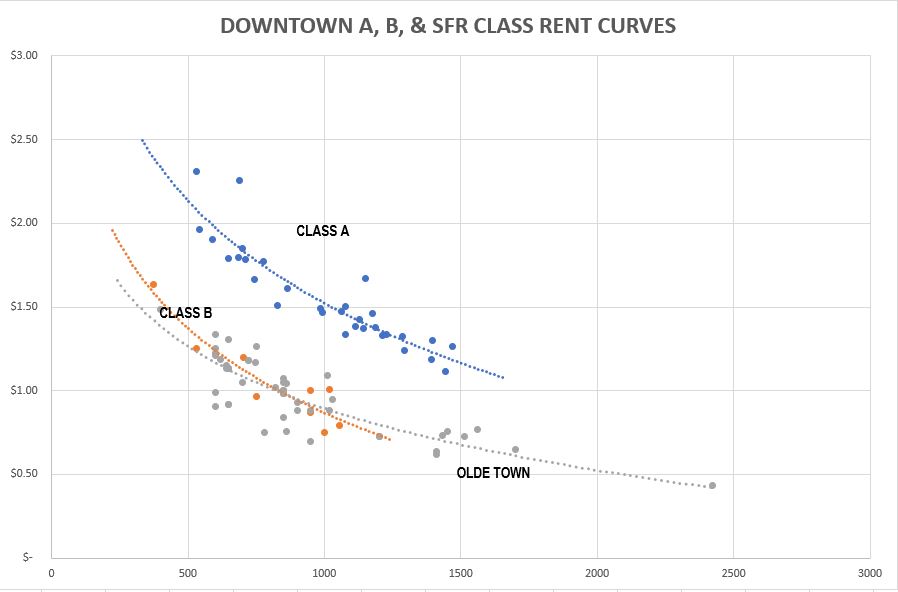For investors looking for a long-term steady source of income with minimal risk, a triple net lease offers a promising prospect. Unlike double net leases, which require tenants to pay some degree of the rented property’s maintenance costs, real estate taxes, fees, and property insurance, a triple net lease requires the tenant to pay all of those costs, in addition to rent and utility bills.
Without a net lease contract, the landlord (or investor) would typically pay for the building’s insurance, taxes, maintenance costs, and any other fees while renting to tenants, so a triple net lease, also known as a “triple N”, typically benefits real estate investors.
But when considering whether to draft up a triple net lease agreement, there are some important considerations to keep in mind. In this article, we will take a look at three things you might not have known about a triple net lease.
1. You Need A Portfolio of Properties
To invest in a triple net lease agreement, you will typically need to lease at least three commercial properties, and preferably more. Ideally, you will want a single tenant to rent all of the commercial properties in your portfolio, such as office buildings, parks, shopping centers, restaurant chains, pharmacies, or banks.
Since you are investing in high quality properties with all the upkeep and fees taken care of, you can enter the agreement without fear of losing your investment. Particularly given that the normal term for a triple net lease agreement runs from about ten to fifteen years, with a steady rent appreciation throughout that time. So, you are pretty much guaranteed a return on your investments at minimum.
You do, however, need to have a minimum accreditation of at least $1 million. And this net worth accreditation does not include the value of $200,000 in income, or a primary residence. Interested investors without access to sufficient investment offerings can invest in a real estate investment trust, or REIT, that pairs smaller investors with other partner investors.
2. The Issues of Taxes
For investors whose properties are sold, it is possible to simply transfer the initial capital into a new triple N lease agreement without paying additional taxes. This is called a 1031 tax-deferred exchange, and allows the landlord to continue their holdings almost uninterrupted.
On the flip side, however, triple net lease agreement holders have been deemed passive investors by the IRS, which means that they are not considered to be an active business or trade. As a result, landlords with a triple net lease agreement may not be eligible for the 20% tax deduction that most landlords count as a benefit. Even if a landlord with triple net lease agreements puts in significant work to oversee the tenant’s financial responsibilities (property taxes, building insurance, and regular maintenance), and takes on some level of economic risk in signing this agreement, they are still considered passive investors, and thus may need to renegotiate their contractual terms if they want to be eligible for increased tax deductions- or find a way to record and prove that they put in at least 250 hours each year of active engagement.
For tenants, one drawback of entering into this type of lease agreement is assuming the burden of paying property taxes. If a community raises the tax rate annually, or raises appraisals on commercial properties, then the tenant may not have recourse to contest the higher tax prices. For this they would have to rely on the landlord, who may be less willing to spend time and money conducting a private appraisal to fight the higher appraisal. This is to the detriment of the tenant, who is left footing a higher bill.
If a landlord adopts this fully hands off approach to investing, however, it may backfire on them in the end. If the lease expires and the tenant chooses to move somewhere with lower taxes, then the investor will suddenly assume all responsibility for the property’s fees, including the higher taxes, while searching for a new replacement tenant. And if the property has higher prices than other similar ones, it may be difficult to find a tenant willing to pay more on a regular basis for a similar building.
3. Tenants Can Benefit Too
A triple net lease agreement places all the responsibility for the property on the tenant, from a broken pipe to ensuring that the property’s Wi-fi is up to speed. So, it may seem like it only benefits the investors who own the building. In fact, however, this is not the case. Since tenants bear all the responsibility for the property, they also benefit from having more freedom with the building. They can change and re-arrange the interior and exterior of the building to fit with the needs and aesthetics of their brand. That way, tenants representing specific companies can keep a consistent appearance across all the properties they manage. This is a huge benefit, particularly for tenants who may not have a sufficient amount of capital to invest in their own property purchases.
In addition, triple net leases are generally more flexible, allowing the tenant to take full charge of the property without the landlord overseeing daily operations, but with the reassurance that there will be a limit on tax and insurance increases during the course of the agreement. Since the tenant is absorbing the risk of the investor’s overhead fees, they can often negotiate for a lower base rental fee amount that works better for them.
A Sound Investment
Despite the possible risks, a triple net lease agreement is a widely favored interaction between tenants and landlords that utilizes the landlord’s investment capabilities combined with the tenant’s on-site assistance, regular maintenance, and payment of fees. For commercial real estate investors, drawing up a triple net lease agreement is a smart approach to investing in commercial real estate with minimal risks and a slow, gradual, long term appreciation of the initial investment capital.







Leave A Comment